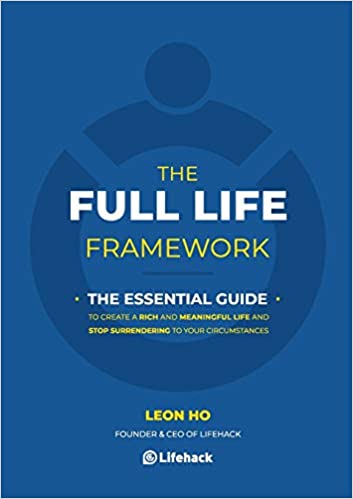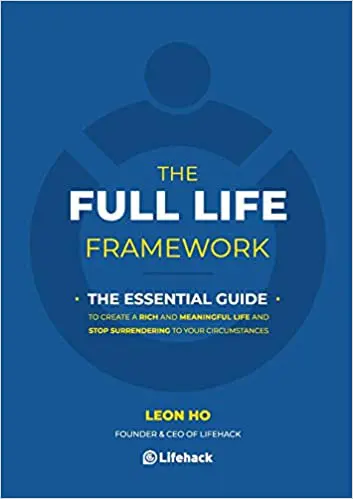
Are you experiencing “summer slacker syndrome?” Don’t beat yourself up over it. The warmer months of the year trigger this phenomenon — even among the most motivated individuals.
Why does this happen? There are actually several reasons. For starters, we tend to be more tired during the summer because we’re acclimating to the heat, and our metabolism has slowed down. In addition, if you’re a parent, you want to spend time with your kids while they’re on summer vacation. And, there are a ton of summer activities that are pulling you away from work — why stay cooped up inside when you could be sipping a cold beverage on the beach?
Regardless of the exact reason, it’s not uncommon for us to drag during the summer. But, if you still need to get things done, here are 9 ways to ensure that you have stamina throughout the summer months.
1. Stay hydrated.
If you’re dragging this summer, there’s most likely a simple culprit. You’re dehydrated.
“In the heat, one byproduct of the increased temperature could be dehydration,” Jonathan Cane, exercise physiologist, and co-owner of City Coach Multisport,” told Aaptiv. “If not in a clinical sense, certainly in the low-level, chronic, less-than-optimal hydration sense.”
“Dehydration is a critical component that often leads to excessive fatigue and lack of energy when it comes to how individuals handle the heat,” adds Dr. Joel Seedman, neuromuscular physiologist, performance specialist, and owner of Advanced Human Performance. “In hotter climates, individuals are more likely to become dehydrated due to the body’s adaptive mechanism of perspiration and sweating.”
Even if you feel like you’re drinking enough water, we’re sweating more often to keep cool. As a consequence, our bodies are losing water faster than usual. “This can lead to electrolyte imbalances and a number of physiological consequences that can promote lack of energy and even physical ailments if not properly attended to,” Seedman says.
To make sure that you’re hydrated, try;
- Chugging a glass of water as soon as you wake up.
- Keeping a pitcher of water in the fridge and/or having a water bottle in sight.
- Setting a timer or using an app Waterlogged to remind you to drink take a swig.
- Infusing your water with fruits or herbs, so it’s not as boring.
- Replacing soda with seltzer water, smoothies, or juices.
2. Snack on water-rich fruits and vegetables and spicy foods.
I know on those scorching dog days of summer, I don’t have much of an appetite. But, you need food to keep running. It’s just like filling your car with gas when it’s approaching empty.
The smart move to keep your energy up is to eat lightly throughout the day. Specifically, eating fruits and veggies like celery, green peppers, oranges, and watermelon. Besides being loaded with nutrients, they also contain lots of H20.
“Make sure you pair them with a protein, to keep your blood sugar levels stable,” advises Elisah Tashjian, a holistic nutrition consultant in Prevention Magazine.
What else should you chow down on this summer? Spicy foods. That may sound counterproductive, but it’s worth it.
Curry and chili can stimulate heat receptors in the mouth, which enhance circulation and cause sweating, in turn helping to cool the body down,” says Donald Deblock, a nurse practitioner with Rutgers University Health Services in Newark, NJ.
3. Don’t skimp on the z’s.
Are you having difficulty sleeping in the summer? You’re not alone. It happens to the best of us. And, there’s a valid reason.
“The longer daylight hours and the higher, sometimes humid, temperatures make it difficult to sleep well,” says Kat Lederle, Ph.D., MSc. “Your body clock, which is located in your brain, uses light and darkness as signals for day and night,” she says. “The longer we ‘see’ light, the longer the body clock will tell the body it’s daytime and it needs to stay awake.”
Also, with longer days, comes lifestyle changes. For example, you might be staying out later with friends or family. There’s also a chance that you’re eating dinner once it gets dark. And the alcohol might be flowing more liberally.
Still, you need to get a solid 6 to 8 hours of sleep each night. To make this possible, stick with a consistent sleep-wake schedule. Have a wind-down ritual, like reading, when it approaches bedtime. And, make sure that you keep your bedroom dark and cold.
Personally, I like white noise when I sleep. So, I actually sleep better when there’s a running fan or AC unit. Plus, it keeps my room nice and cool throughout the night.
4. Rethink your exercise routine.
“Exercising or performing physical activity in the heat actually burns more calories than other climate conditions,” says Dr. Seedman. “Our bodies tend to fatigue more rapidly, involving a relatively higher heart rate response, and thus require more ATP (or energy) expenditure to maintain physical activity levels.”
At the same time, physical activity is a proven way to build up our stamina and maintain our energy. It’s also one of the best things that we can do for ourselves physically and mentally. So, what can be done?
Well, go ahead and work up a sweat. Just don’t overexert yourself. For example, instead of running or cycling, go swimming or paddleboarding. Swap out cardio for exercises that work out large muscle groups, like lifting weights. You could also try team sports like beach volleyball or pickleball.
If you want to run or cycle, try first thing in the morning or during the evening. Or, stay indoors and get on a treadmill or stationary bike.
5. Get your wrists wet.
Who doesn’t enjoy jumping into a pool, lake, or the ocean on a blustering, sunny day? But, sometimes, you just can’t go for a refreshing swim. Sure, a shower might work. But, what if you’re stuck inside working?
The answer? Running cold water over your wrists.
“Arterial pulse points are the areas in which the arterial blood vessels come closest to the surface of the skin,” explains Deblock. “Arterial blood flows away from the heart, so if you cool it with cold water, it will circulate the cooler blood throughout your body and ultimately lower your core temperature.”
And, this trick also works if the heat and humidity are making it difficult to fall asleep. “Rinse your wrists or your feet with cold water before you hit the hay, and it will help you drift off,” he says.
6. Schedule your priorities.
I get it. I would much rather enjoy the summer than being chained behind a desk, even though I enjoy the work that I do. But, there’s more to life than all work and not play.
At the same time, I have bills to pay. More importantly, I have work responsibilities that I still need to attend to. Thankfully, there is a way to find a happy place.
Rather than focus on everything you think has to get done, hone in on your priorities. That’s not always the easiest feat to accomplish. But, in a previous article, Calendar co-founder John Hall says it’s possible if you;
-
- Determine your “big three.” These are your three most important tasks that must be completed. No exception.
- Enhance your time management skills. Some recommendations would be to work when you’re most energetic, keeping a time log, and following the two-minute rule. Also, don’t forget to reduce distractions, cluster smaller tasks, and avoid the “urgency trap.”
- Feel in-balance. This is possible “by maximizing your time at work, stop overcommitting, and not bringing work at home,” says Hall. “You should also establish boundaries. For example, if you’re spending time with friends or family on a Saturday night, then don’t respond to any work-related correspondence.”
- Innovate, learn, and grow. Brainstorm ideas to improve a product, service, or product. Take a class or attend industry events. And stay on top of the latest trends.
- Get to know the people in your neighborhood. By this, I mean fostering relationships with customers, business partners, investors, and employees. Outside of work, spend quality time with friends and family.
- Grow your network. Find mentors, mingle with potential employers, or just attend a local meetup or virtual conference.
After identifying your priorities, add them to your calendar so that there aren’t any conflicts.
7. Work in sprints.
Your mileage may vary on this, but I’ve found this to be an effective strategy.
If possible, kick into high gear for a couple of days. For example, you could put in 10 or 12 hour days. But, only for three or four days. Then, with your priorities out of the way, you can enjoy the fruits of your labor the rest of the week.
8. Prioritize fun.
In addition to prioritizing your work, also pencil in time for fun. You don’t need to squeeze in everything. But, if there’s a ballgame, concert, or backyard activities that you really want to attend, go for it. After all, you only have a small window of time to enjoy your favorite summer activities!
Besides, having fun reduces stress, strengthens relationships, and sparks creativity. It also recharges your batteries. And, when it’s time to get back to work, you’ll be more productive since you’re refreshed.
9. Encourage vacation.
According to Time Off’s latest State of American Vacation 2018 report, on average, employees receive 11 days of paid time off per year. However, employees only use 5 of those days. And, since there was a pandemic in 2020, most of us haven’t gone on a vacation in quite some time.
Why’s that a problem? Because vacations are good for you physically and mentally. What’s more, vacations help prevent burnout and increase happiness. But, how can you realistically take a vacation?
In another Calendar piece, Angela Ruth recommends;
- Getting ahead of your work priorities. “You’ll feel a lot less stressed if you can clear some deadlines on the days directly following your vacation,” writes Angela. “In addition, using time management techniques in your online calendar, such as time blocking, can help you focus and get more done in the same amount of time.”
- Bring some work with you. “This is a tricky one, but it might be worth your time to take some work with you on the road,” she adds. “Just be sure not to let it take over your entire vacation. Otherwise, you’re just paying way too much for a remote workspace.
- Plan in advance. “Grab your online calendar and start planning when you want to take your next vacation,” advises Angela. “This way, you can weigh the pros, cons, and prices of different dates and locations. Then, leading up to your departure, you can spread out all of the tasks you need to complete before you embark with plenty of time to spare.”











